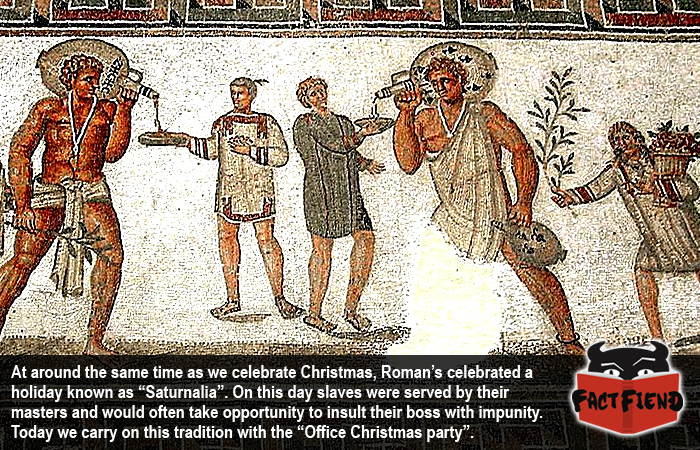Ancient Roman Holidays & Festivals
Compitalia – Late December or Early January
Originally the Compitalia was a movable feast, one of the most important of the Feriae Conceptivae, whose dates were fixed by various presiding authorities including the consuls, praetor, priestly colleges or minor religious or political dignitaries. During the early Empire, its dates were fixed at Januarius 3rd to 5th. The president of each insula would sacrifice a hen on a temporary altar at the local crossroads. This signaled the beginning of three days of celebration.

But it was in the country, where the festival probably had its origin, that each landowner would build a small shrine with altar at the boundary with his neighbor. There he placed a plough and a wooden doll for each person in his household. The festival the next day was inaugurated by a sacrifice which purified the farm for the coming year. As part of the celebration, slaves were given extra rations including wine and the foreman in charge of the estate (the vilicus) and his wife deigned to dine with them. In this it shared characteristics with the Saturnalia and it may be that originally the landowner would celebrate Saturnalia with his slaves in Rome and then Compitalia with the slaves on his estate. Later the vilicus probably came to represent the master.
That the Compitalia was one of the most important festivals can be seen from the fact that it was one of the few that Macrobius reported as still being observed in the fourth century AD. It may have a more modern successor in ceremonial blessings of the fields.



